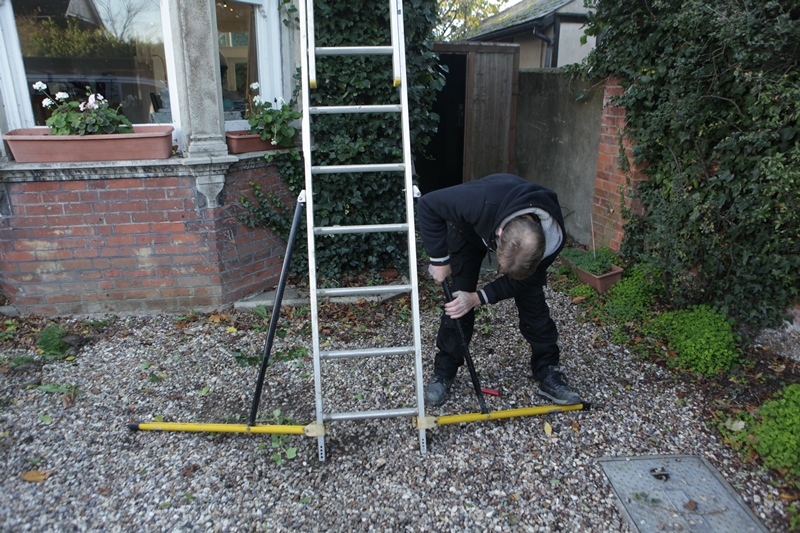
Following a tragic accident on site, Roger Bisby assesses the importance of staying safe when working with ladders, paying close attention to one device from Ladder Safety Devices.
A few weeks ago I was working on a site where somebody died by falling off a ladder. I had gone to collect some thermal boards and he told me he would give me a hand to unload when I got back. When I eventually did get back, after stopping off for some breakfast, he was already in intensive care and, shortly after that, he was dead – the victim of a massive brain haemorrhage. The fall was from just over two metres and there wasn’t even any sign of blood where he hit his head. It was a senseless stupid accident – the kind that just shouldn’t happen.
The ladder was set against a plastic gutter on a single-storey building. We all know that nobody should ever put a ladder against a plastic gutter but on a single-storey extension many of us do it because the perceived risk is low. I could easily get side-tracked here talking about the nature of risk, but the bottom line is that we are often in the most danger when we think we are perfectly safe.
“If there is ever a risk of falling don’t just leave it to chance, do something, anything, to mitigate the risk.”
If you have to climb up three storeys on a rope-operated extension ladder you take every precaution in the book, but the little hops we ignore. If there is ever a risk of falling don’t just leave it to chance, do something, anything, to mitigate the risk. That could be something as simple as tying a ladder or it could even be not using a ladder at all. It is up to you to assess the risks and use your judgement.
It is a common misconception that you are not allowed to work from ladders. It is certainly true that you should only do limited, short duration jobs from a ladder and you should have at least three points of contact with the ladder so that probably means only doing jobs which can be completed with one hand.
Ladder stabilisers
Stopping a ladder moving can be done in many different ways – ladder footers or a bag of sand – give me a bag of sand any day. Better still give me a ladder stabiliser such as the one from Ladder Safety Devices.
Some years ago I made a short video showing how easy it is to fall off a ladder when over-reaching.
I put on a fall arrest harness and climbed the ladder and then reached out. I didn’t have to reach far before the ladder flipped. That’s right ‘flipped’ not ‘slipped’. Prior to making that video I thought the big problem was sideways slipping but very often it is simply that the ladder flips through 180 degrees so you end up with your back to the wall, except, of course, you don’t because you let go.
I repeated the experiment with a pair of ladder stabilisers and reached as far as I could. No matter how hard I tried, and believe me I tried, I could not flip the ladder or induce sideways slippage.
In fact, I put such a lot of force into that experiment that I bent the ladder and it had to be scrapped.
You can fit those stabilisers to any trade ladder, but my favoured approach is to buy a ladder with them already fitted. The ladder I use is called a Hunter Ladder, after the man that invented the device. These are sold by Ladder Safety Devices. The company also makes a number of other clever gadgets and systems to improve your chances of survival. They could end up saving your life, but if all they do is save you having to have a month off work with your leg in plaster that would seem to me to be value for money.








